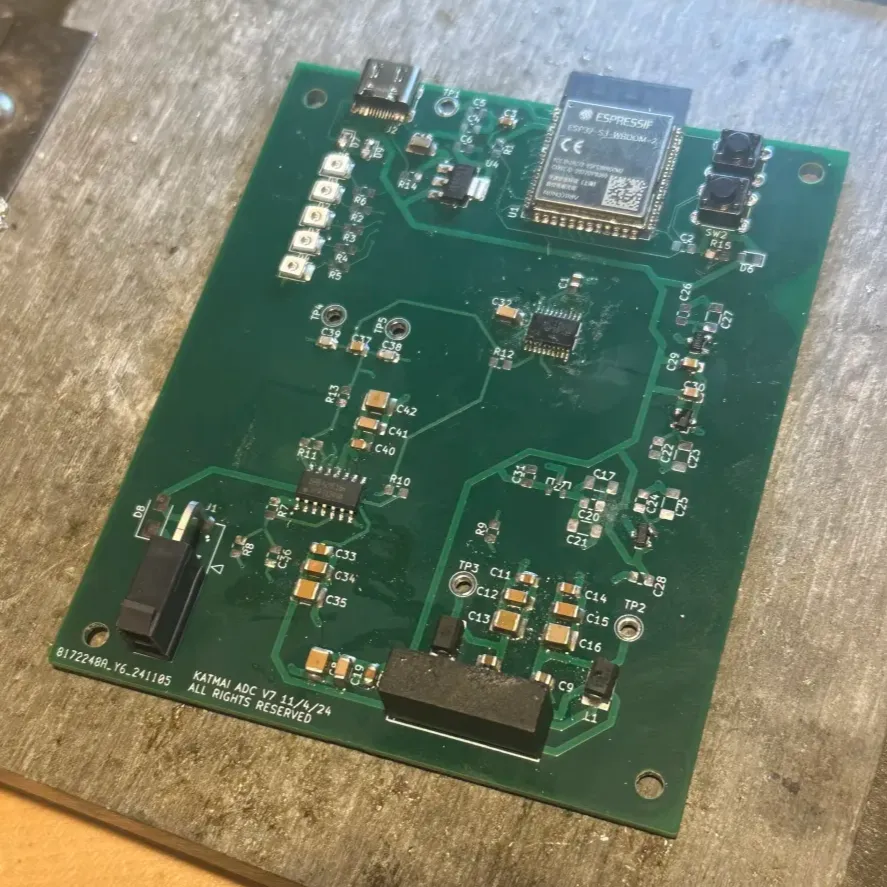Katmai: Quantum Register Educational Device
Daniel SiegelSummary
At Katmai, I designed and optimized hardware and enclosures for a quantum register educational device, built to teach spin physics in university labs. My work spanned precision circuit design, power electronics, EMI shielding, and iterative enclosure prototyping. These systems helped students and researchers explore quantum mechanics, spin-state manipulation, and advanced measurement techniques.


Key Metrics
- Enclosure Prototypes: Developed 5 distinct iterations across sheet metal, 3D printing, and laser-cut fabrication.
- ADC Precision: Achieved 24-bit resolution with low-noise SPI communication and op-amp-based voltage attenuation.
- Power Electronics: Implemented high-current, low-voltage distribution with fast-switching polarization for NMR spectroscopy.
- PCB Optimization: Created multi-layer design for EMI reduction, signal integrity, and manufacturability (JLCPCB-produced).
Design and Process
1. Enclosure Prototyping & Fabrication
I developed five unique enclosure prototypes, iterating across different manufacturing techniques to balance structural integrity, tolerancing, and cost-effectiveness.
- Sheet Metal Fabrication → Optimized bend radii, fastener integration, and manufacturability.
- 3D Printing → Designed for layer adhesion, print orientation, and structural ribs to prevent warping.
- Laser-Cut Assembly → Explored tab-and-slot construction, fusion with other fabrication techniques, and material constraints.
2. Hardware & Electronics Development
I designed a 24-bit ADC system with SPI communication, integrating an op-amp-based voltage attenuation network inspired by Art of Electronics. This required:
- Precision voltage reference circuits for stable, low-drift measurements.
- Optimized mixed-signal PCB layout to minimize EMI and crosstalk in a multi-layer design.
- Selection of low-noise components to ensure high-fidelity signal acquisition.
Beyond ADC design, my work extended into power electronics and system-level integration:
- Power distribution and EMI shielding for low-noise operation.
- High-current, low-voltage regulation to support fast-switching polarization circuits for NMR spectroscopy.
- Coil physics and back-EMF protection, ensuring the stability of spin-state measurements while preventing voltage spikes.
By iterating on PCB design, enclosure form factor, and EMI considerations, I helped optimize Katmai’s quantum register devices for scalability and lab-friendly usability.
NDA & Release Notes
Due to confidentiality agreements, I cannot share full schematics, projects, or internal images. However, a beta version of the product was released for university testing.